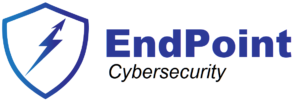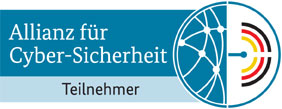Implementing ISO 27001:2022 Annex A.15 – Supplier Relationships
We started the ISO 27001:2022 series with the promise of explaining how the 14 categories of controls can be implemented.
Today we address ISO 27001:2022 Annex A.15, “Supplier Relationships”, which is crucial for organizations in order to ensure the security of information assets shared with external suppliers. This annex provides guidelines for managing supplier relationships effectively to mitigate risks and maintain information security.
From an IT security perspective, suppliers are external entities or third-party organizations that provide goods, services, or resources to support an organization’s operations.
These suppliers often play a critical role in the organization’s IT infrastructure, providing hardware, software, cloud services, and other technology solutions.
Suppliers may also have access to sensitive information, systems, or networks of the organization, making them potential security risks.
Therefore, managing supplier relationships is essential for ensuring the security of information assets and mitigating risks associated with third-party access.
Understanding the Importance of Supplier Relationships
Supplier relationships play a vital role in the overall information security posture of organizations. Annex A.15 emphasizes several key aspects:
- Risk Management: Assessing and managing risks associated with suppliers who have access to sensitive information.
- Contractual Agreements: Establishing clear contractual agreements that define security responsibilities and obligations.
- Monitoring and Review: Continuously monitoring supplier performance and adherence to security requirements.
Implementing Annex A.15 in Practice
Supplier Selection and Evaluation
Practical Examples:
- Risk Assessment: Conduct thorough risk assessments of potential suppliers to evaluate their security controls, practices, and potential risks to information assets.
- Due Diligence: Perform due diligence checks, such as reviewing security certifications, conducting site visits, and requesting security documentation from suppliers.
- Security Requirements: Clearly communicate security requirements to suppliers during the selection process, including data protection measures, access controls, and incident response capabilities.
Contractual Agreements
Practical Examples:
- Security Clauses: Include specific security clauses in contracts that outline security requirements, confidentiality obligations, data protection measures, and compliance with relevant regulations.
- Data Protection: Address data protection requirements, including data handling procedures, data encryption, and secure transmission methods.
- Service Level Agreements (SLAs): Define SLAs for security-related metrics, such as incident response times, availability guarantees, and security incident notification procedures.
Monitoring and Review
Practical Examples:
- Ongoing Assessment: Continuously monitor supplier performance and security practices to ensure compliance with contractual agreements and security requirements.
- Audits and Reviews: Conduct periodic audits and reviews of supplier security controls, practices, and compliance with contractual obligations.
- Incident Response: Establish procedures for managing security incidents involving suppliers, including incident reporting, investigation, and remediation.
Audit of Compliance with Annex A.15
Auditing compliance with Annex A.15 involves assessing the effectiveness of supplier relationship management practices. The audit process typically includes:
- Audit Preparation: Gather documentation related to supplier relationships, contracts, and security controls.
- On-site Audit: Assess implementation of supplier management controls through interviews, document reviews, and observations.
- Audit Findings: Analyze audit findings and identify areas of non-compliance or improvement opportunities.
- Reporting: Document audit results and provide recommendations for corrective actions to address identified issues.
- Follow-up: Monitor implementation of corrective actions and conduct follow-up audits to verify compliance.
Conclusion
ISO 27001:2022 Annex A.15 emphasizes the importance of effectively managing supplier relationships to protect information assets and mitigate risks. By implementing robust supplier management practices, organizations can ensure compliance with security requirements, maintain confidentiality, integrity, and availability of sensitive information, and enhance overall information security posture. Regular audits help assess compliance with Annex A.15 requirements and drive continuous improvement in supplier relationship management processes.
The post Implementing ISO 27001:2022 Annex A.15 – Supplier Relationships first appeared on Sorin Mustaca on Cybersecurity.



